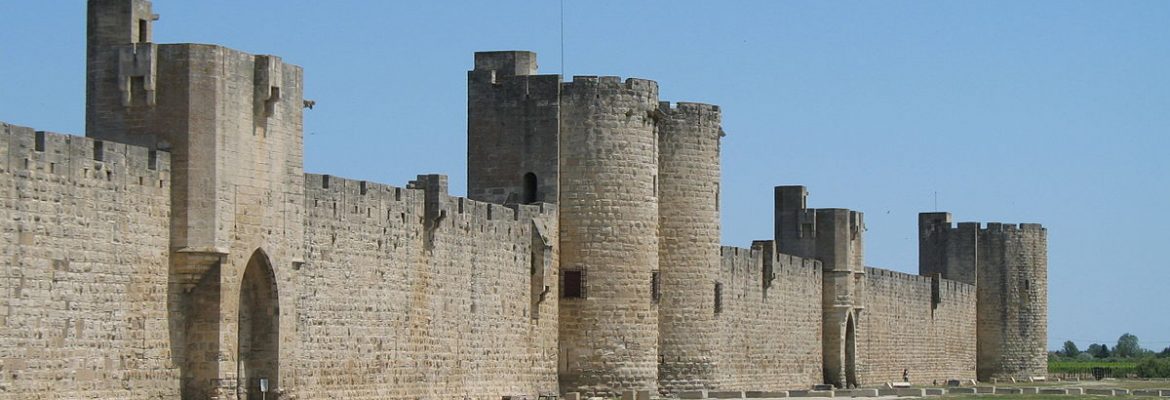Tower and ramparts of Aigues-Mortes, Aigues-Mortes, Languedoc-Roussillon, France
In 1240, King Louis IX set his hugely ambitious plan in motion, namely to furnish his kingdom with a port town that would liberate him, with regard to future crusades, from the goodwill of foreign princes, chiefly the Holy Roman Emperor Frederick II, who reigned over Provence at the time, and King James I of Aragon, whose possessions stretched from Montpellier to Catalonia.
The Constance Tower and a Château were erected in a matter of years. A population began to assemble in the shadow of their walls, drawn by the impressive privileges granted by the King as an incentive for the founding of the city Aigues-Mortes.
In 1266, King Louis IX decided to go one better and commissioned the construction of ramparts around the town, which were not completed until some 30 years later, during the reign of his grandson, Philip the Fair.
Except for the Château, destroyed during a skirmish in the Hundred Years’ War and not rebuilt until the 17th century, the town has preserved the entire perimeter wall (1,643 meters), featuring three corner towers, two flanking towers and the entrances provided by five main gates and five posterns. The only elements that did not survive the monument’s reorganization after the development of armaments are the ditches and hoarding, which were maintained until the 18th century.
A port used during the last two crusades, both led by King Louis IX, Aigues-Mortes was also a commercial port from its founding – the town even obtained a monopoly for goods coming in and out of the kingdom in 1278. Although the port inevitably silted up starting in the late 13th century, it kept its monopoly until Provence was annexed to the kingdom, in 1481.
Despite its gradual decline, the town continued to benefit from royal munificence. In July 1538, Francis I of France chose the town of his predecessor to host a lavish welcome to Charles V with whom he hoped to engineer a reconciliation and acquire from him the Duchy of Milan, which the French King had coveted for some time. Unfortunately, the meeting, which lasted three days, did not yield a positive outcome for the kingdom – as agreed with the Emperor, Francis I, stopped in Lyon on his way back to Paris to light stakes on which the first French Protestants were burnt.
Yet these first executions did not curb the development of Protestantism, which rapidly spread across the south of France, and the region of Aigues-Mortes went on to become the theatre of numerous clashes between Catholics and Huguenots. In 1574, Aigues-Mortes fell under Protestant control. In 1576, King Henry III of France signed the Edict of Beaulieu that granted eight places de sûreté (safe havens) to the Protestants, with Aigues-Mortes at the top of the list. This provision was endorsed by King Henry IV in his famous Edict of Nantes, promulgated in 1598.
The town retained its Huguenot garrison of about 2,000 men until 1622, when the town was briefly besieged by Louis XIII and Richelieu – a simple show of force to which the town’s Protestant governor, Gaspard III of Coligny, Duke of Châtillon, responded by handing the town over to the King in exchange for the title of Marshal of France. Aigues-Mortes was to become the champion of the Counter-Reformation.
Visit France. Epic French Culture & Adventure Route © All Rights Reserved | Monika & Simon Newbound 2018


